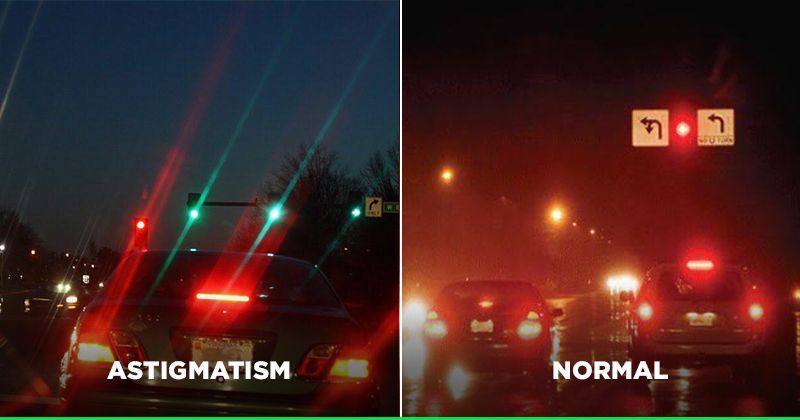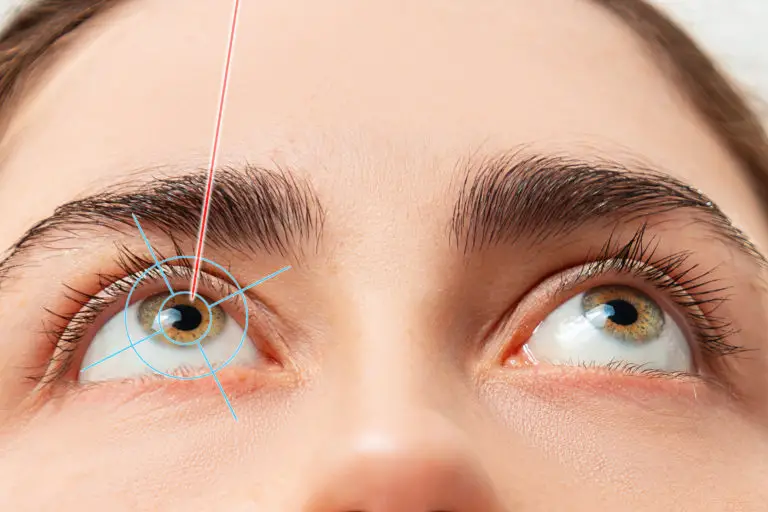Have you ever found yourself gazing at a light, perhaps a distant streetlamp or the shimmering stars in the night sky, and noticed something peculiar? There, amidst the luminous display, you perceive a subtle distortion, a distortion that transforms the once-clear beams of light into something more complex and intriguing. If you’ve experienced this phenomenon, you have a specific condition not everyone has – astigmatism.

Read on as we delve into the world of astigmatism, shedding light on this common eye condition that affects millions of people worldwide. We will explore what astigmatism is, how it affects vision, and the various ways it can manifest in our daily lives.
Understanding the Symptom of Beams of Light
If you experience the phenomenon of beams spreading from a light source, you might be one of the many individuals who have astigmatism. This condition occurs when the cornea (the clear front layer of the eyeball) or the lens inside the eye has an abnormal shape. In a normal eye, the shape is perfectly round, but in the case of astigmatism, the eye is shaped like an oval or an egg, resembling an American football.

The abnormal shape of the lens or cornea caused by astigmatism can cause light to bend as it enters the eye, resulting in a refractive error. This error leads to the perception of beams of light emanating from light sources.
Identifying and Diagnosing Astigmatism
Astigmatism is a common eye condition that affects how light enters the eye and can result in distorted or blurred vision. Here are the causes and factors contributing to astigmatism:
- Corneal Shape: The primary cause of astigmatism is an irregular shape of the cornea or lens. In a normal eye, the cornea is round and symmetrical, but in astigmatism, it may be shaped more like a football, with unequal curvatures. This uneven curvature causes light rays to focus on multiple points in the eye, leading to blurred vision.
- Genetics: Astigmatism often runs in families, suggesting a genetic component. If your parents or grandparents have astigmatism, you may be more likely to develop it as well.
- Eye Injury or Surgery: Trauma or surgery to the eye can alter the shape of the cornea, leading to astigmatism. Injuries that cause scarring or changes in corneal shape can result in this condition.
- Keratoconus: This is a progressive eye condition in which the cornea becomes thin and bulges outward, resulting in astigmatism. Keratoconus can be genetic or develop due to other factors like eye rubbing.
- Eye Growth: Astigmatism can develop or change as the eye grows, particularly during childhood and adolescence. This is why regular eye exams are crucial for children to detect and manage astigmatism early.
- Excessive Eye Rubbing: Frequent and vigorous eye rubbing can alter the corneal shape, potentially leading to astigmatism or exacerbating an existing condition.
- Age-Related Changes: Some people may develop astigmatism as they age, especially after the age of 40. This is often linked to changes in the lens of the eye, a condition known as lenticular astigmatism.
- Other Eye Conditions: Certain eye conditions, such as nearsightedness (myopia) or farsightedness (hyperopia), can coexist with astigmatism, further affecting vision.
Seeing beams or streaks of light around bright objects, especially at night, is a common symptom of astigmatism. This phenomenon is known as “starburst” or “glare” and occurs due to the irregular focusing of light in the eye.
The impact of astigmatism on daily life and activities
Here are some ways astigmatism can impact daily life and activities:
- Blurred Vision: The most noticeable effect of astigmatism is blurred vision. This can make it difficult to see clearly at various distances, whether reading a book, looking at a computer screen, or recognizing faces from a distance.
- Eye Strain and Fatigue: People with astigmatism often experience eye strain and fatigue when trying to focus on objects. This can be especially problematic during tasks that require prolonged concentration, such as reading or working on a computer.
- Headaches: Frequent eye strain caused by astigmatism can lead to headaches, which can be quite debilitating. These headaches are often centered around the forehead and eyes.
- Difficulty with Night Driving: Astigmatism can make it challenging to see clearly at night, as oncoming headlights and streetlights may appear as streaks or halos. This can affect the ability to drive safely in low-light conditions.
- Sensitivity to Glare: People with astigmatism may also be more sensitive to glare from bright lights, which can be uncomfortable and impair vision.
- Reduced Depth Perception: Astigmatism can impact depth perception, making it harder to judge distances accurately. This can affect activities like sports and driving.
- Difficulty with Contact Lenses: Some individuals with astigmatism find it challenging to wear traditional contact lenses. Toric lenses, specially designed for astigmatism, are an option but may require more care and attention.
- Limitations in Choice of Eyeglass Frames: People with astigmatism may have to choose eyeglass frames that can accommodate the specific lens shape required to correct their vision, which may limit their style options.
- Frequent Prescription Changes: Astigmatism can change over time, leading to the need for regular adjustments to eyeglass or contact lens prescriptions.
- Impact on Career and Hobbies: Depending on the severity of astigmatism and the requirements of one’s job or hobbies, it may be necessary to take additional precautions or seek vision correction to ensure optimal performance.
It’s important to note that astigmatism can vary in severity, and not everyone with astigmatism will experience all of these effects. Astigmatism is a common condition, and with the right correction, many individuals can enjoy a relatively normal and active life.
Tips for Managing Astigmatism
Living with astigmatism doesn’t have to be a hindrance. With the right strategies and care, individuals can effectively manage the condition and enjoy clear vision. Here are some tips:
1. Regular Eye Exams: Schedule regular eye exams with an optometrist to monitor your vision and detect any changes or complications related to astigmatism.
2. Wear Corrective Lenses: Whether it’s glasses or contact lenses, wearing the appropriate corrective lenses prescribed by your eye care professional can significantly improve your vision and reduce the perception of light beams.
3. Proper Lighting: Ensure that the lighting in your environment is adequate and positioned to minimize glare. This can help reduce eye strain and discomfort associated with astigmatism.
4. Eye Exercises: Engaging in regular eye exercises can help strengthen the eye muscles and improve focus. Consult with your eye care professional for recommended exercises.
5. Protective Eyewear: When participating in activities that may pose a risk to your eyes, such as sports or certain occupations, wear protective eyewear to prevent injuries that can exacerbate astigmatism.
Embracing a Clearer Vision
Through advances in research and advancements in eye care, there are now more options than ever to manage astigmatism and improve vision. Don’t let the perception of light beams or other symptoms associated with astigmatism hold you back. Remember, astigmatism is a common condition, and millions of people lead fulfilling lives while effectively managing this eye condition.
Sources:
A Complete Guide To Astigmatism
How Does Astigmatism Affect Your Night Vision?
Astigmatism: What it is and how to treat it

This Site Was Inspired By An Interest in Protecting the Environment:
We had the privilege and joy of learning from Dr. Charlie Stine who instilled a love for the natural world through incredible field trips with the Johns Hopkins Odyssey Certificate program in Environmental Studies. At the time, the program was endorsed by the Maryland Department of Natural Resources. Sadly, after Dr. Stine retired, the program was phased out. We hope that we honor his legacy by shining a bright light on environmental issues and sharing good news about the success of various conservation programs when possible.

